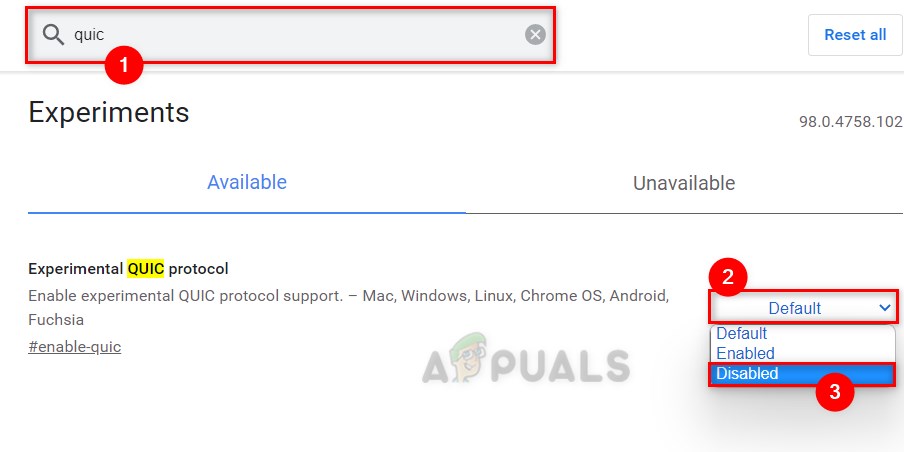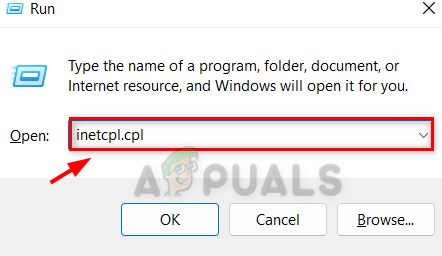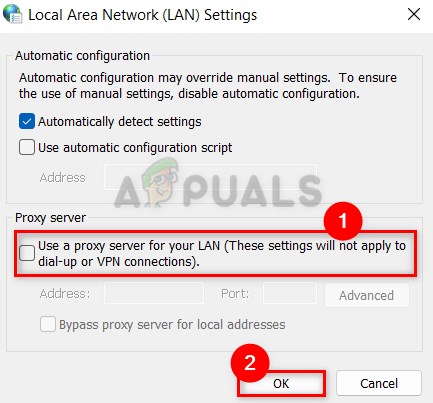How to Fix ERR_QUIC_PROTOCOL_ERROR in Google Chrome
Many Windows users have reported that they are facing an issue where they are getting an ERR_QUIC_PROTOCOL_ERROR while trying to load a webpage in the Google Chrome browser. This site can’t be reached OR this website is not available is also displayed along with the ERR_QUIC_PROTOCOL_ERROR.

There might be various reasons behind this error and we have listed them below.
- Problem with the extensions in the browser – This problem might be triggered by extensions that users have downloaded and activated from unsecured third-party sources.
- Proxy settings in the browser – This problem can sometimes be caused by changes to your system’s proxy settings via internet options.
- Unstable internet connection – Users often attribute many causes to the above-mentioned issue, but the root cause might just be an inconsistent internet connection.
- Experimental QUIC protocol enabled – Although the QUIC protocol feature can increase speed and performance, it must be adopted by all current web servers and firewalls. This might be the reason for the Google Chrome error code.
In this guide, we will show you a variety of fixes that will help you in resolving this issue in Windows.
Let us see them one by one!
Try browsing the webpage using any other browser
Whenever any problem occurs in the browser app, users try to find the reason behind the error and fix it. But actually, the problem can be with the internet connection on your system. So, if a user encounters such an error while using Google Chrome, we recommend that they browse the webpage using all of the other browsers installed on their system, such as Opera, Firefox, and so on.
Disable or Turn Off Extensions in Google Chrome
- Open the Google Chrome browser on your system.
- In a new tab, type chrome://extensions/ and hit the Enter key on yor keyboard.
- In the Extensions page, click the toggle button of the Extension (Eg: Adobe Acrobat extension) to disable it as shown in the below image.

Disable extensions in chrome - Restart your browser.
- Now try and check if the webpage is opening properly.
Hope this fix worked for you.
Disable Experimental QUIC Protocol in Google Chrome
In spite of having more pros than cons to the experimental QUIC protocol, there is also a drawback that makes it unadoptable till most firewalls adopt it. When the QUIC protocol is enabled, the webpage has to go through the firewall protection module, which will not detect it if it does not support it.
So we recommend users disable the experimental QUIC protocol in Chrome until it is widely adopted by all.
Follow these steps given below on how to disable the experimental QUIC protocol in Google Chrome.
- Open the Google chrome on windows system
- Type chrome://flags in a new tab and press Enter key.

Open chrome://flags page - In the Experiments page, type quic in the search field, and Experimental QUIC protocol appears just below it.
- Then, click on the dropdown option and select Disabled from the list as shown below.

Disable Experimental QUIC protocol - Close the tab and restart your browser.
- Try again and check if the webpage is working fine.
That’s it!
Check if the Proxy Settings of Chrome are correct
Below are a few procedures that will assist users in checking their proxy settings on their PC.
- Open the Run dialog box by pressing Win + R keys simultaneously on your keyboard.
- Type inetcpl.cpl in the Run box and hit the Enter key to open the Internet Options window.

Open Internet Options by Run command - Go to the Connections tab in the Internet Options window.
- In the Connections tab, click LAN settings as shown below.

Go to LAN settings - In the LAN Settings window, uncheck Use a proxy server for your LAN checkbox under Proxy server and click OK.

Uncheck Use a proxy server for your LAN - Close the Internet Options window by clicking OK.
Now check if the problem still exists.





